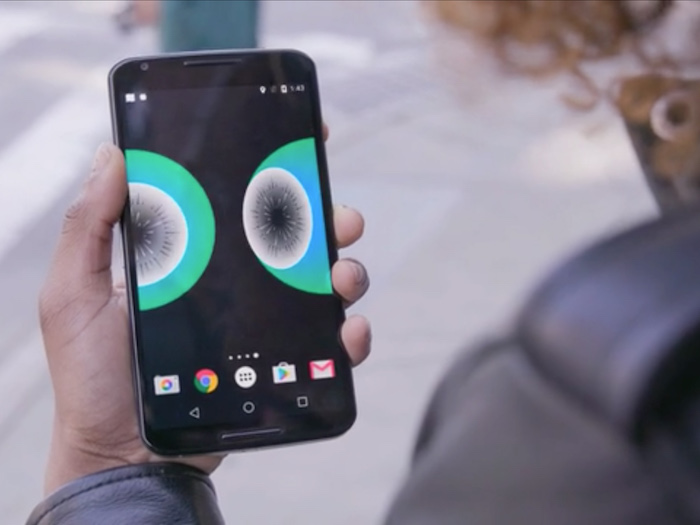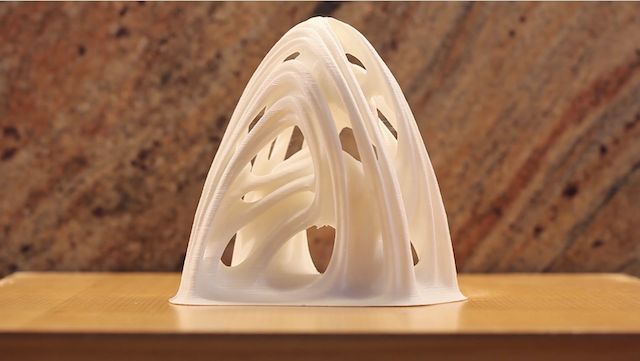Rolandt
Shared posts
Twitter Favorites: [neil21] Mistaken because human evolution doesn't move that fast. We are still social campfire village urbanist animals. https://t.co/7iKnHsWpjY
Mistaken because human evolution doesn't move that fast. We are still social campfire village urbanist animals. twitter.com/chenoehart/sta…
Twitter Favorites: [bmann] LBRY, a blockchain for art & media https://t.co/UcRiuq7UJT #tumbled
Bigpond mail changes.
By searching around on the Telstra web site. They do have the information, and I must admit the email has a link to the starting point. I learned that the changes to me really involve their closing up of shop of the Bigpond brand, and finally modernizing their email system to use secure connections. Minor really, but enough to stop my Thunderbird accounts getting mail without changes.
So my ancient Bigpond server settings will need to be changed when the day comes (Today). Telstra recommend I also convert to IMAP. That is a whole different issue. My existing email accounts are POP and I just want then to keep working. So here are the changes I will have to make to my existing Bigpond mail accounts.
To summarise the changes to "just keep on as it was" the following information will need to be changed
Incoming information in your account.
| Field | Existing Setting | New Setting |
| Server Name: | mail.bigpond.com | pop.telstra.com |
| Port: | 110 | 995 |
| Connection Security: | None | SSL/TLS |
Outgoing Server (SMTP)
This is at the bottom of the list of accounts in account settings.
| Field | Existing Setting | New Setting |
| Server Name: | mail.bigpond.com | smtp.telstra.com |
| Port: | 25 | 465 |
| Connection Security: | None | SSL/TLS |
Great short video by Douglas Rushkoff that summarizes his latest book 'Throwing Rocks at the Google Bus'
I especially like the part where he explains why family owned businesses are so much more stable than other businesses. Makes sense. He also explains the flow of how the economy has worked since the dark ages, and how modern technology platforms, while a mostly good thing, necessitate doing things differently now, or else.
Anyway, enjoy the video, or not :-)
Make It Hard To Disrupt Someone’s Workflow
It’s often hard to reach one or more of our team.
This is deliberate. We spend many hours each day not checking Slack, Skype, email, or any social media tool. We’re busy, like you, getting real work done. If there is truly an issue which needs an urgent response, we all have each other’s number (hasn’t happened yet).
Collaboration tools trick us into thinking we need to be easier to reach. They suggest we should be constantly interacting and sharing ideas/opinions on each other’s work. It’s a myth.
We need to be harder to reach. We need to find more time to do deep work. This is work that involves deep thought, research, careful implementation. You can’t do that with constant interruptions and external pressure to check for new questions every few minutes.
It feels good to answer a question. You feel you’re adding value and being a helpful team player. But the cost is really high. Especially when it interrupts the work you were hired to do. You weren’t hired to answer your colleague’s questions, so don’t spend most of your time doing it.
The best collaboration tools don’t encourage people to ask and answer questions every few minutes. They make it easier to get the information without asking questions.
If I do have a question, I can send a message on Slack and wait for the person to reply. If I’m on an urgent deadline (and believe this deadline trumps whatever the recipient is working on), I can call and get an immediate response. This doesn’t happen because few deadlines are truly urgent (and we don’t leave truly important work to the last minute!).
Slack is a great tool to pick up your messages, respond to questions, and update what you’re doing (between periods of deep concentration). Anything beyond that is better served by scheduling a call or meeting in person. The best way to show respect for someone’s work is to give them the time and headspace to get on with it.
AI Has Yet To Defeat Human Intelligence, Here’s Why: iFLYTEK CEO
While the artificial intelligence industry has been around for 60 years, it wasn’t until AlphaGo’s landslide victory over Korean Go grandmaster Lee Se-Dol that AI returned to the spotlight.
Se-Dol’s match with AlphaGo brought more attention to the emerging sector, and it also put AI technology under tougher scrutiny from industry experts.
Some scientists argued that artificial intelligence might be the most apocalyptic technology of all. This view has an eager audience, including tech giants from Bill Gates to Elon Musk. The legendary astrophysicist Stephen Hawking went even further, remarking that “the development of full artificial intelligence could spell the end of the human race.”
Although Lee’s failure seems to support this ominous prediction, Hu Yu, the president of Chinese voice recognition giant iFLYTEK, believes AI technology, despite its quick development, still has a long way to go before it’s comparable to human intelligence.
 “AI is divided into three development stages: computational intelligence, sensory intelligence, and cognitive intelligence”, Hu Yu illustrated at a technology meetup held in Shanghai last week.
“AI is divided into three development stages: computational intelligence, sensory intelligence, and cognitive intelligence”, Hu Yu illustrated at a technology meetup held in Shanghai last week.
“Machines have outrun human brain in terms of computational capabilities, a point testified by AlphaGo’s victory over human Go master. Also, technology development in recent years has enabled machines to easily eclipse people’s sensory ability… Nobody can feel or detect the world through radar, ultrasound wave or laser, but computers can.”
“However, the most essential difference of human[s] from animals, or the factor that made us the ruler of the world, lies in our cognition, the ability to acquire knowledge, rationale and to understand through thought, experience and senses. No machine can do that now.”
“What’s more, all the AI-enabled machines are experts in a specific function, AlphaGo and IBM’s Deep Blue for board games, Pepper for companionship and entertainment. The list can go on and on, but none of the machines are made for general functions that are comparable to human being.”
As language is one of the largest distinguishing factors between humans and other livings, many scientists have used it to understand human cognition. “AI is out of the question without understanding of human language, the concepts behind the languages and the relations between the concepts,” he emphasized.
There are two mainstream channels to achieve revolution in sensory and cognition. One major and perhaps a little far-fetched way is to produce a computer replica of the human mind through cognitive neuroscience by simulating the organizing and working principles of the human brain. The tech industry has offered a more accessible solution to the same problem: a big data-based AI or artificial neural network.
The iFLYTEK Super Brain (讯飞超脑, our translation), an artificial intelligence project developed by the Chinese company, is among a rising wave of artificial neural network projects like Google Brain and Baidu Brain.
Currently, iFLYTEK Super Brain consists of a neural view machine, reading machine, and listening machine for sensory capabilities, said Hu. “Neural thinking machines for conception and decision-making and expression machines for execution are also integrated to achieve the leap from sensory to cognitive intelligence.”
Powered by iFLYTEK Super Brain, the company’s AI open platform now provides service to over 180,000 developers. According to the firm, AI technology is currently most favored by smart home and robotics companies, which accounts for more than 70 percent of the developers on the platform. Other industries ready to adopt the emerging tech include smart wearables, entertainment, and security.
Credit: 123RF Stock Photo
More global warming, more flooding
Water levels are rising, and naturally, the coasts are feeling it. Jonathan Corum for the New York Times shows the rise in tidal flooding along the Atlantic and Gulf Coasts. Scientists think it’s going to get a lot worse fast.
The time series charts are an interesting use of dual axes. The background is mean sea level rise, and the bars are days of flooding. Most of the time, mixed units don’t work so well, but I think it works here, with labeling and varying color gradient to differentiate the two chart types placed one on top of the other.
Tags: global warming, New York Times
Brands selling out :: Exhibit A - Hasselblad

The latest camera brand that is selling out their pedigree is Hasselblad. And it does not really matter if it's Leica, Zeiss, Schneider-Kreuznach or Hasselblad. You can print their logo onto a smartphone, but you are not getting the quality product attached to the brand for a fraction of the price.
When Hasselblad announced their Moto Mod at IFA, most of the journalists in attendance were in awe. A Hasselblad attached to a smartphone. Wow. But something struck me as odd: a 12 MP camera with an aperture of 3.5 to 6.5? That's not going to capture a lot of light. And as it turns out, the camera is just terrible. It was optimized for one thing, and one thing only: 10x optical zoom. Unfortunately the photos it takes turn out soft and grainy.
Marques Brownlee tells it as it is:
Aftershokz Trekz Titanium bone conducting headphones

Headsets serve two purposes for me: they let me listen in private when I am traveling and they isolate me from the surrounding noise. But what if you do want to hear what's happening around you? Like running through a forest or riding in traffic? Aftershokz set out to solve this with their Trekz Titanium headset. It works by sending the sound through your cheekbones instead of your ear canal. You can still hear what's happening because your ears remain free.
Big question: how do they sound? Somewhere between tinny and terrible. The frequency spectrum proabably looks like a bell curve. Midrange is fine, high frequencies are dull, low frequencies don't seem to exist. It gets better when you plug your ears with your fingers or the included squishy ear plugs, but that defies the purpose. You can switch between two EQ settings by pressing both volume buttons at the same time. One of them provides more bass than the other. There are two noise cancelling microphones for making phones calls.
How do they fit? The band between those "earpieces" is an elastic titanium alloy which creates the pressure needed for bone conducting and you wear the band over your ears so they don't slide down. Glasses are not a problem, since you can slide them under the headset. The headset tickles the skin in front of your ears and that can be irritating. It also leak sound since the vibration has to be strong enough to induce sound in your ear.
Are they useless? Not at all. When you listen to podcasts or when you need to make phone calls, you don't need Hi-Fi sound quality. I have custom earplugs (german: Otoplastik) and the Trekz Titanium is the only headset that can bypass those.
Linkage on a Tuesday
- A good read here from a Greek tech and food entrepreneur telling his story of idea to execution to early success to failure to learning to pivot to greater success.
- How a fake food business won an award. A salutary tale of how to game social media via buying 'influencers' and what this means for your online marketing strategy.
- Why am I being paid less than my male colleagues? TLDR probably because you never asked for more money and didn't negotiate. I've heard this before that women don't tend to negotiate. Men negotiate from their first salary so get ahead early on. It doesn't occur to women to do the same. A lesson in negotiation here for men and women of all ages.
- This next one isn't news to me, but it may be news to you and is one of the reasons why I keep banging on about gender discrimination. Having women on your team makes for a better business:
Companies with three or more corporate directors who are women (in at least four out of five years) outperformed those with no women on the board by 84% on return on sales, 60% on return on invested capital and 46% on return on equity.Also
A 2009 study in Silicon Valley found that venture-backed companies run by women had annual revenues that were 12% higher, used an average of one third less committed capital and had lower failure rates than those led by men.
There's more in this article about addressing the gender gap in angel investing.
- This post from Terence Eden is great looking at user-centred design and creating personas when creating websites, apps and services. Entitled 'Debuffs, Enchantment, Equipment, and Players - an RPG Player's Guide to User Stories. I highly recommend.
Google’s Pixel smartphones will reportedly launch running Android 7.1
When it gets unveiled later today, the LG V20 will be the first smartphone to be announced with Android 7.0, but it looks like it won’t be the first phone to make the jump to 7.1.
That distinction will be claimed by the Pixel and the Pixel XL, Google’s upcoming 2016 “Nexus” devices, according to a new report. Google is expected to properly reveal the two devices sometime this fall.
Google's Pixel and Pixel XL to be released with Android 7.1 (NMR1).
— LlabTooFeR (@LlabTooFeR) September 5, 2016
The rumour comes courtesy of a tweet from LlabTooFer, a leaker associated for his/her relationship to HTC. Given that multiple rumours have said HTC is building the two smartphones for Google, there’s a good chance LlabTooFer’s information is correct.
Note also that LlabTooFer refers to the devices as the “Pixel” and “Pixel XL,” corroborating earlier reports from Android Central and Android Police that said Google will drop the Nexus brand this year. In the past, the Pixel brand has been associated with Google’s in-house tablets and Chromebooks, which haven’t sold particularly well.
Pocket-lint speculates Android 7.1 will include software and features exclusive to the two new phones. In particular, Daydream, Google’s new virtual reality platform, is expected to launch on the Pixel and Pixel XL. Current high-end Android smartphones will not be Daydream certified.
We’ll have more on the Pixel and Pixel XL as the date of their reveal gets closer.
PiBakery – foolproof custom Raspbian setup
Everybody loves cake, right? Cakes have layers. Mmm…. cake! We’re sure you’ll also love PiBakery, a brand new way to bake Raspberry Pi images, which makes creating a custom image a… piece of cake.

PiBakery was created by David Ferguson. He’s a talented 17-year-old whom we first met at the Big Birthday event we held to celebrate four years of Pi back in February. He showed Liz and Eben a work-in-progress version of PiBakery, and they’ve been raving about it ever since.
This crafty program enables users to mix together a customised version of Raspbian with additional ingredients, and you need absolutely no experience with computers to set up your custom image.
In PiBakery, you drag and drop blocks (just like Scratch) to add extra components. PiBakery then mixes the latest version of Raspbian with its additional sprinkles, and flashes the result directly to an SD card.

“The idea for PiBakery came about when I went to a Raspberry Pi event,” says David. “I needed to connect my Pi to the network there, but didn’t have a monitor, keyboard, and mouse. I needed a way of adding a network to my Raspberry Pi that didn’t require booting it up and manually connecting.”
“PiBakery solves this issue,” he explains. “You can simply drag across the blocks that you want to use with your Raspberry Pi, and the SD card will be created for you.”
“If you’ve already made an SD card using PiBakery, you can insert that card back into your computer, and keep editing the blocks to add additional software, configure new wireless networks, and alter different settings,” says David. “All without having to find a monitor, keyboard, and mouse.”
PiBakery is available for Mac and Windows, with a Linux version on the way. It can be downloaded directly from its website. As well as the scripts and block interface, it contains the whole Raspbian installation, so the initial download takes quite a while. However, it makes the process of building and flashing SD cards remarkably simple.

David has written a guide to creating customised SD cards with PiBakery. It’s a very easy program to use, and we followed his guide to quickly build a custom version of Raspbian that connected straight to our local wireless network. Guess what: it worked first time.
Behind the scenes, PiBakery creates a set of scripts that run when the Raspberry Pi is powered on (either just the first time, or every time it is powered). These scripts can be used to set up and connect to a WiFi network, and activate SSH.
Other options include installing Apache, changing the user password, and running Python or command line scripts.
The user controls which scripts are used with the block-based interface. You drag and drop the tasks you want the Raspberry Pi to perform when it’s powered up. Piece of cake.
We love PiBakery, and cake. Did we mention cake?
The post PiBakery – foolproof custom Raspbian setup appeared first on Raspberry Pi.
Note 7 recall estimated to cost Samsung $1 billion
Samsung may spend as much as $1 billion USD to replace all of the 2.5 million Note 7 smartphones it recalled last week.
That’s according to an estimate by Bloomberg. To put that amount in perspective, it represents less than 5 percent of Samsung’s $20.6 billion projected net income for the year.
Indeed, for Samsung, the damage to its reputation is probably much harder to swallow than the actual dollar amount — though the company did say the number was “heartbreaking.” With the new iPhone set to be unveiled tomorrow, the recall could not have at a worse time.
More practically, when it does make its way back to markets across the world, the Note 7 will not ship with one of the company’s own batteries. Prior to the recall, about 70 percent of Note 7s were powered by Samsung SDI batteries, which were responsible for the 30 or so phones that went up in flames. In markets where Samsung did not recall the Note 7, the smartphone was powered by batteries supplied by Chinese manufacturer ATL. According to reports from local Korean media, Samsung will temporarily stop sourcing batteries from subsidiary Samsung SDI in favour of ones made by ATL.
Google Pixel and Pixel XL to Launch with Android 7.1 Nougat
 Google usually releases a new Nexus handset with a new version of Android. This year though, the company has changed things a bit. It has already released Android 7.0 Nougat for its Nexus devices, and it plans on launching replacing its Nexus lineup with Pixel branded smartphones.
Continue reading →
Google usually releases a new Nexus handset with a new version of Android. This year though, the company has changed things a bit. It has already released Android 7.0 Nougat for its Nexus devices, and it plans on launching replacing its Nexus lineup with Pixel branded smartphones.
Continue reading →
An Iconic Dutch Dam Is Getting Decked Out in Interactive Light Art
 Waterlicht - Icoon Afsluitdijk. Image: Studio Roosegaarde.
Waterlicht - Icoon Afsluitdijk. Image: Studio Roosegaarde.
The Afsluitdijk in the Netherlands is a 20-mile-long dike that runs from the village of Den Oever in North Holland to the village of Zurich in Friesland, and helps protect the coastline from flooding. Built in the early 20th century, it was handmade brick by brick and has become an icon of Dutch design. But now, over 80 years since it was created, it is getting a makeover, of sorts, to "strenghthen the beauty of the dam."
Dutch designer Daan Roosegaarde, of Smog Free Tower and glow-in-the-dark roadway fame, along with the Dutch government and local regions, has a plan to augment the dam with subtle interactions and innovative lighting. The project, called Icoon Afsluitdijk,features various temporary and permanent pieces. Part of the permanent works will include a project called Gates of Light. This will see the two concrete lock complexes, the Lorentz and Stevin lock, located at different ends of the dike, covered in a retroreflective layer from Roosegaarde. This layer will cause the 60 monuments to light up from the headlights of passing cars for a "cinematic experience creating a spectacular entrance to the Afsluitdijk."
 Gates of Light. Images: Studio Roosegaarde
Gates of Light. Images: Studio Roosegaarde

Gates of Light. Images: Studio Roosegaarde
Additionally, the unqiueness of the straight line of the dike will be celebrated with Line of Light, which will see the guide rail on the Afsluitdijk get a reflective layer, giving cars added safety and creating a Zen-like calm.
One of the temporary designs will be a reworking of Roosegaarde's previous piece Waterlicht. Presented at the midpoint of the Afsluitdijk at a place called Breezanddijk, it uses LEDs, lens, and custom software and will feature wavy lines of light that mimic rippling water. This "virtual flood" showcases how high the water in the Netherlands would be without engineering projects like the Afsluitdijk. Along with this, other temporary works include energy-generating kites with luminous cables, for a piece called Windvogel, and Glowing Nature, which will use bioluminescent algae from micro-organisms and place them inside a historical bunker from the period when the dike was completed in 1932. Visitors will be encourged to interact with these natural forms which causes them to light up.
"The Dutch landscape has traditionally been a place for innovation," says Roosegaarde. "Our dikes symbolize the creative power of the Netherlands when it comes to living with water. Now it is time for an update. It is an honor to work on this project."
 The Afsluitdijk. Image: Studio Roosegaarde
The Afsluitdijk. Image: Studio Roosegaarde
 Windvogel. Image: Studio Roosegaarde
Windvogel. Image: Studio Roosegaarde

 Line of Light. Image: Studio Roosegaarde
Line of Light. Image: Studio Roosegaarde
 Glowing Nature - Icoon Afsluitdijk. Image: Studio Roosegaarde
Glowing Nature - Icoon Afsluitdijk. Image: Studio Roosegaarde

Watch a video of Waterlicht below.
Waterlicht Afsluitdijk by Daan Roosegaarde from Studio Roosegaarde on Vimeo.
Visit Studio Roosegaarde's website here to learn more about the project.
Related:
Go See a Sea of Lasers Flooding an Amsterdam Museum
Sustainable Light Installations Transform Singapore’s Marina Bay
This Solar-Powered Tornado Sculpture Lights Up And "Talks" To You
The Better Way
This story is from our Spring 2016 issue out now, available at better bike and book stores.
Biking times: They are the best of times
Joe Travers of bikingtoronto.com recently spoofed the version of the London Underground “walking times” map by Pavlo Kalyta that showed walking distances between tube stations. Travers decided to use biking times in between Toronto’s subway stops to illustrate that biking is, indeed, the better way - or at least the faster way in most cases.
WHY’D HE DO IT?
“I realized that if people knew how quick a nice bike ride would be between two specific stations they may be more likely to dust off their bike and give it a try. It’s only 29 minutes from Woodbine to College, which is far faster than the TTC at rush hour.” Travers started commuting by bike in 2005 when the TTC replaced the tracks for the 506 streetcar line along Carlton/ College.
“All the re-routing and detours made it take forever to get to work, so a co- worker, who is also a neighbor, and I, tried biking in together one weekendand it was easier than we expected. We went from being streetcar buddies to bike buddies.”
Average times from Google map directions.
dandyhorse added the bus route to York University in homage to Darnel Harris' quest for active transport near York U. Read about that here.
Our new issue of dandyhorse has arrived! dandyhorse is available for FREE at Urbane Cyclist, Bikes on Wheels, Cycle Couture, Sweet Pete's, Hoopdriver, Batemans, Velofix, and Steamwhistle.Our new issue of dandyhorse includes cover art by Kent Monkman, interviews with Catherine McKenna and the women behind Toronto's first feminist bike zine, lots of news and views on Bloor - including this story above - and much, much more! Get dandy at your door or at better bike and book shops in Toronto.
Related on dandyBLOG:
Forging Concessions on Jane and Finch
Ohrn Image — Public Art
Another afternoon wandering by bike around the Mural Festival’s hot zone (Main and Broadway), another few murals seen for the first time. This one pre-dates the Festival and is by Spencer Keeton Cunningham.
To me, these highly stylized figures show elements of self-destructiveness, what with weapons, missing appendages and cigarettes.

Three Wolves — 2014. Spencer Keeton Cunningham.
What does art mean to you personally? . . . . I personally make art because it feels natural and I like the potential positive power that art has on it’s audience similar to writing, music and film. The conversation you can start with art is unlike many other ways we have as humans of expressing ourselves. We can only communicate with linguistics to a certain extent. Then once that form of communication is exhausted I feel that we instinctively gravitate towards visual communication.
It’s like a dance in a sense, a communicative dance similar to certain species of birds and other animals mating rituals. I think we are all meant to be creating things with one another sort of like some giant ritual in a sense. I think as humans we become very detached from our “intuitive creative instincts” as I call them.
From 1xRUN
150 Self-Portraits Reveal the Inner Lives of Iconic Artists
 Illumination, Ai Weiwei, 2009
Illumination, Ai Weiwei, 2009
Long before the selfie became too ubiquitous for its own good, the self-portrait reigned supreme, the ultimate way to artistically explore the ever-perplexing and elusive idea of self. Facing the World: Self-Portraits from Rembrandt to Ai Weiwei, on view at the Scottish National Portrait Gallery in Edinburgh, chronicles 600 years of artists turning the camera (or paintbrush, or pen) on themselves.
 La Leçon de peinture or La Séance de peinture [The Painting Lesson or The Painting Session], Henri Matisse, 1919
La Leçon de peinture or La Séance de peinture [The Painting Lesson or The Painting Session], Henri Matisse, 1919
Among the 150 works included, there are self-portraits by some of the most revered names in art history, from Matisse, Courbet, and Rembrandt, to Warhol, Ai Weiwei, and Marina Abramović. The focus on self-portraiture seems to serve a dual function: to highlight the best examples of self-portraiture throughout time, but also to show us how seminal artists have viewed themselves throughout history. Looking inwardly, does the tortured artist cliché turn out to be real?
 Me at 10 (from Family Suite), Tracey Emin, 1994
Me at 10 (from Family Suite), Tracey Emin, 1994
There is a strong sensation of psychological curiosity at play here. Does the lack of smiles and expressions of emotional vulnerability visible in many of these portraits, for example, tell something larger about the mythical idea of the artist? Or are they just indicative of the moments artists generally choose to reflect upon themselves? When a very visceral and direct artist like Tracey Emin makes a moody, abstract, and somewhat violent self-portrait, is a hidden truth about her psyche seeping out?
 Self-Portrait, Rembrandt, c.1657
Self-Portrait, Rembrandt, c.1657
Imogen Gibbon and Michael Clarke, the co-curators of the exhibition, believe that the prevalence of self-portraiture throughout art history is in part due to accessibility and the notion of legacy: “As an artist, the most readily accessible model you have is yourself. If you want to represent the human form or the human psyche, you can just pick up a mirror and represent what you see,” the curators tell The Creators Project. “Also, as an artist, if you are creating works of art, some of which you would hope survive and outlive you, why would you not be interested in creating an image of yourself which you would hope would live on for eternity?”
 Self Portrait with Fried Eggs, Sarah Lucas, 1996
Self Portrait with Fried Eggs, Sarah Lucas, 1996
But the curators also agree that self-portraiture can function as an important vehicle for the authentic self-expression of an artist: “When done with complete truth, it offers a glimpse of someone’s thoughts and feelings. If you look at John Bellany’s two watercolors featured in the show, they are from his series depicting his time in hospital undergoing liver transplant surgery. One has him hooked up to drips with an oxygen mask over his mouth and the other has him hooked up to hospital pajamas and you can see the scars and stitches from his operation.”
 Self-Portrait with Platinum Bouffant Wig, Andt Warhol, 1981
Self-Portrait with Platinum Bouffant Wig, Andt Warhol, 1981
“These works aren’t vanity, but incredibly brave and honest depictions of the pain and fear alongside the fragile balance of life and death. That kind of honesty is what makes so many of these images compelling and why an artist, such as Rembrandt, is still so admired centuries after his death, because he depicts the truth of life and aging,” the curators add. “These self-portraits serve as documents of someone’s life.”
 John Patrick Byrne, b. 1940. Artist, dramatist and stage designer (Self-Portrait in a Flowered Jacket), John Byrne, 1971-1973
John Patrick Byrne, b. 1940. Artist, dramatist and stage designer (Self-Portrait in a Flowered Jacket), John Byrne, 1971-1973
Check out Facing the World: Self-Portraits from Rembrandt to Ai Wei Wei at the Scottish National Portrait Gallery in Edinburgh until October 16th, 2016.
Related:
Not Selfies, but Hybrid Selfie-Portraiture
"Ever Seen a Fat Fox? Human Obesity Explored" Review
|
mkalus
shared this story
from |
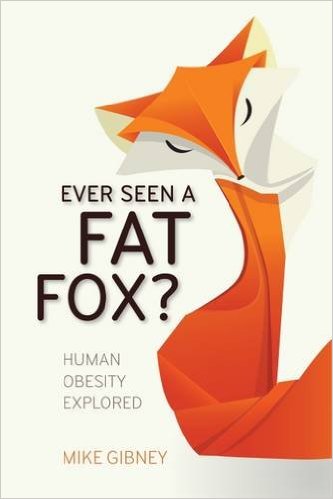
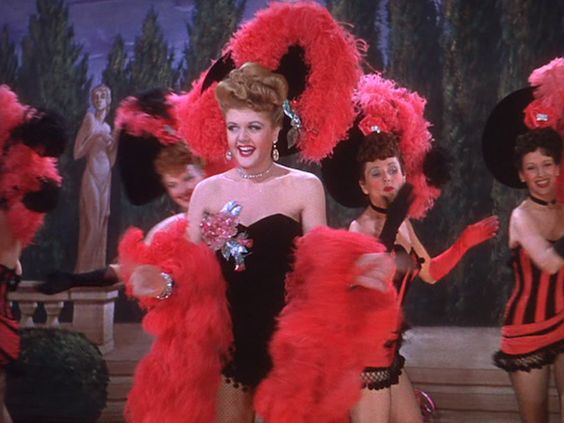


Beinahe eine Meldung wert
|
mkalus
shared this story
from |
Neulich hätte ich mir beinahe eine Zeitung gekauft. Aber dann habe ich es doch nicht getan, und das hätte ich beinahe bereut, denn beinahe hätte ich deshalb nicht erfahren, dass Britney Spears beinahe nicht wohlbehalten aus ihrem Urlaub zurückgekehrt wäre. Aber zum Glück gibt es ja das Internet:

Dass sie beinahe ertrunken wäre, hat Britney Spears dem Sender „BBC Radio 1“ erzählt. Jedenfalls so ähnlich. Eigentlich hat sie gesagt: „Ich bin wirklich fast ertrunken.“ So wie man sagt: „Ich war so sauer, ich wäre wirklich fast Amok gelaufen.“ Aber zum Glück ist ihr das nicht auch noch rausgerutscht. Wer weiß, was dann jetzt in den Zeitungen gestanden hätte.
Dabei könnte man es verstehen, wenn sie das gesagt hätte, denn ihre Security hat von der Beinahe-Katastrophe gar nichts mitbekommen. Und daher lässt sich auch nicht genau sagen, ob Britney Spears wirklich fünf Minuten lang unter Wasser um ihr Leben gestrampelt hat, wie sie behauptet — oder ob es ihr einfach nur sehr lang vorgekommen ist. Man kennt das ja selbst. Wenn man mit einem dringenden Bedürfnis vor einer verschlossenen Toiletten-Tür steht, können einem schon zehn Sekunden wie fünf Minuten vorkommen. Später denkt man, man wäre fast gestorben. Und Britney Spears wäre „wirklich fast ertrunken“. Sagt sie. Aber im Grunde ist nichts passiert. Die „Deutsche Presse-Agentur“ hat die Geschichte dennoch aufgegriffen. Und jetzt steht es beinahe überall:

(mopo.de)

(stern.de)

(gala.de)
Wenn man genau hinsieht, ist natürlich doch etwas passiert, denn kaum war Britney Spears wieder einigermaßen bei Luft, erschien ihr neues Album — wie durch einen Zufall nur wenige Tage nach dieser Beinahe-Schreckensmeldung.
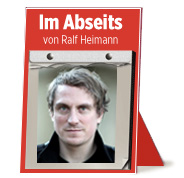 Ralf Heimann hat vor ein paar Jahren aus Versehen einen Zeitungsbericht über einen umgefallenen Blumenkübel berühmt gemacht. Seitdem lassen ihn abseitige Meldungen nicht mehr los. Er hat mehrere Bücher veröffentlicht, zuletzt zusammen mit Daniel Wichmann „Hier ist alles Banane — Erich Honeckers geheime Tagebücher 1994 – 2015“. Fürs BILDblog kümmert er sich um all die unwichtigen Dinge, die in Deutschland und auf der Welt so passieren.
Ralf Heimann hat vor ein paar Jahren aus Versehen einen Zeitungsbericht über einen umgefallenen Blumenkübel berühmt gemacht. Seitdem lassen ihn abseitige Meldungen nicht mehr los. Er hat mehrere Bücher veröffentlicht, zuletzt zusammen mit Daniel Wichmann „Hier ist alles Banane — Erich Honeckers geheime Tagebücher 1994 – 2015“. Fürs BILDblog kümmert er sich um all die unwichtigen Dinge, die in Deutschland und auf der Welt so passieren.(Foto: Jean-Marie Tronquet)
Es gibt nun mehrere Möglichkeiten. Eine wäre: Es war alles tatsächlich so, wie Britney Spears behauptet. Eine andere ist: Am Abend nach dem großen Medienecho auf die Hawaii-Erzählung saß irgendwo am Strand von Malibu ein glücklicher Spin-Doctor in seinem Rattanstuhl und wäre vor lauter Freunde darüber, dass mal wieder alles wie am Schnürchen läuft, beinahe in seinem Daiquiri ertrunken.
In dem Fall gab es wahrscheinlich auch diese Szene vier Wochen zuvor in einem Büro des New Yorker Plattenlabels „RCA Records“:
„Das Wichtigste ist, dass alle über Britney sprechen, wenn das neue Album dann kommt.“
„Aber wie sollen wir das hinkriegen?“
„Sie muss was gewinnen.“
„Keine Chance.“
„Vielleicht irgendein Skandälchen? Alkohol? Drogen? Eine Affäre?“
„Das bringt uns auch nicht weiter.“
„Dann seh ich ehrlich gesagt nur eine Möglichkeit.“
„Und die wäre?“
„Die Drowning-Story.“
Die Drowning-Story muss in der Promi-PR-Branche ungefähr das sein, was für den Einbrecher der Dietrich ist. Sie funktioniert im Prinzip immer. Wenn einem sonst gar nichts mehr einfällt, kann man immer noch darauf zurückgreifen.
Und dieser Kniff hat sich entweder sehr weit herumgesprochen, oder die Unter-Wasser-Nahtod-Erfahrung ist mittlerweile eine notwendige Bedingung für eine halbwegs erfolgreiche Karriere in der Unterhaltungsbranche.
Wim Wenders zum Beispiel hat seine als Kind im Rhein erlebt:

Guido Maria Kretschmer war möglicherweise nicht wirklich in Gefahr, als er mit 16 Jahren eine Böschung herunterstürzte und im Wasser landete. Aber er dachte immerhin einen Moment lang: Ich sterbe. Und das reichte schon für den Titel:

Über die Umstände des Unglücks, das Charlène von Monaco überstanden hat, ist nichts Näheres bekannt — außer eben, dass sie über sich sagt: „Ich wäre als Kind fast ertrunken.“ In ihrem Fall ist das gleich doppelt interessant, denn sie wurde später Schwimmerin und holte dreimal Gold bei den Afrikaspielen.

Senta Berger ist das nicht gelungen. Dafür hat sie fast jeden anderen Preis gewonnen. Doch auch das wäre beinahe durch ein Unglück verhindert worden. Als sie fünf war, brach sie auf einem See ins Eis ein und wurde an den Zöpfen wieder herausgezogen:

Aber das steht in keinem Verhältnis zu dem, was die Schauspielerin Leah Rimini (bekannt aus irgendeiner Serie) während ihrer Zeit bei Scientology durchmachen musste: Auch sie wäre fast ertrunken. Und als wäre das nicht schon schlimm genug, ist sie dabei auch noch „pitschnass“ geworden.

Jason Statham, Schauspieler und laut „Wikipedia“ ehemaliger Wasserspringer, musste sich bei den Dreharbeiten zu „The Expendables 3“ von zwei Kampftauchern aus dem Wasser ziehen lassen: weil er sonst ertrunken wäre.

Und Gerard Butler hatte das Pech, dass ihn in den Surf-Szenen des Films „Mavericks“ kein Stuntman vertrat. Während der Dreharbeiten auf dem Meer geriet er, wie er später erzählte, zwischen zwei 15 Meter hohe Monster-Wellen und wäre — Sie ahnen es — beinahe ertrunken:

Bei Jonah Hill war die Geschichte noch etwas besser. Er hatte irgendwann mal eine Rolle in der Komödie „Das ist das Ende“, und wenn seitdem über ihn geschrieben wird, nennen die Journalisten ihn manchmal auch den „Das ist das Ende“-Schauspieler. Dieser „Das ist das Ende“-Schauspieler stieg also irgendwann vor ungefähr drei Jahren am Bondi Beach in Australien betrunken ins Wasser und tat das, was man bei diesem Namen vermuten würde: Er ließ sich von der Strömung aufs Meer treiben.
Natürlich wurde auch er gerettet. Und das gab ihm die Gelegenheit, die Geschichte später noch mal zu erzählen, als er in der Late-Night-Show von Conan O’Brien für seinen neuen Film „21 Jump Street“ Werbung machen durfte:

Ein bisschen wundert man sich natürlich. Alle erzählen die gleiche Geschichte, und es funktioniert doch immer wieder. Aber so ist das wohl in Hollywood. Mit der Lovestory ist es ja auch nicht viel anders. Im Grunde seit Jahrhunderten. Und auch die Drowning-Story hat eine lange Tradition mit einer goldenen Zeit und großen Stars — als man nicht betrunken am Bondi Beach beinahe in den Wellen absoff, sondern wie Frank Sinatra vor der Kulisse des Wailua-Wasserfalls mit blauen Lippen aus dem Waser gezogen wurde:

Und auch hier wird einer wohl für immer unübertroffen bleiben. Elvis Presley. Der King of Rock’n’Roll. Der erfolgreichste Musiker aller Zeiten. Er ist nicht fast in den reißenden Fluten eines Ozeans umgekommen. Er hat auch in diesem Metier etwas geschafft, das wahrscheinlich noch keinem Star vor oder nach ihm gelungen ist:

Here's an App that Tells You When to Get Off Your Damn Phone
 Images courtesy the artist
Images courtesy the artist
Imagine scheduling a hangout and not confirming six times via group text. Or, instead of grabbing your phone, talking to strangers while your date is in the bathroom. No doubt, humanity gets less practice interacting face-to-face than we did when Seinfeld was on the air, but artist and designer Ekene Ijeoma envisions a world where we stare at screens a little less.
His latest project is Look Up, a participatory public art app that interrupts users’ multitasking while they are strolling (or biking, or driving) around New York City and reminds them to be aware of their surroundings.
Look Up from Ekene Ijeoma on Vimeo.
Look Up is not technically an app; it is a living wallpaper that runs in the background while users surf the web, scroll through Instagram, and do other stuff on their phones. At an intersection, a pair of animated eyeballs and a series of vibrations prompt them to look around. “It’s about embracing the serendipity of the city and engaging with its diversity,” Ijeoma tells The Creators Project. “When I’m walking around, I run into so many people, because I’m looking up, and I usually see them before they see me.”
Though largely about upping IRL interactions, Look Up also has a safety component. The app culls data from New York’s Vision Zero database, which documents accidents throughout the city. Each intersection is assigned an “energy score,” representing the number of crashes at that site. Manifested in the app as iris rings in the eyeball animation and number of vibrations, the score reflects the amount of positive energy Ijeoma hopes to pour back into the street.

Downloading an app connotates having to engage with it somehow, and companies often tap social media to quantify “buzz” around IRL events. Look Up however, is not about metrics. Good vibes are all Ijeoma wants to generate. “It doesn’t ask you afterwards if you looked up or not. It’s not recording data. It’s not a gamified reward system, where if you look up this many times, you’ll be the mayor of the corner, or whatever. It’s just look up, and that’s it,” Ijeoma says. “Apps are designed and engineered to make us more addicted and do more things on our phones, but this is an app about not using phones. It’s contradictory. A lot of people are like, ‘Wow, that’s ironic,’ and I’m like, ‘Well, we live in really weird times.’”
He hypothesizes that society’s reliance on technology can only be solved through digital intervention. “In a way, I don’t believe in solving technology with technology, but a lot of governments are thinking about this. In New Jersey, they’re trying to ticket people for walking and texting. In Australia and Germany, they’re putting traffic lights into the street itself, so people don’t have to look up,” Ijeoma says. “For me this is art as a public service. It doesn’t have to be a physical thing in a space for it to be a public art project.”

To learn more about Ekene Ijeoma and Look Up, click here.
Related:
Turning New York's Salary Gap into an Interactive Sculpture
Dance and Climb on a 17’ Tall Fractal Sculpture You Can Touch
 Screencaps and GIF by the author, via
Screencaps and GIF by the author, via
Mathematics and the arts collide in what has to got to be one of Burning Man’s most interactive sculptures—the climbable, algorithm based, Fractal Rock. Designed using a combination of algorithmic Julia set fractal patterns, the sculpture stands 17’ tall and 15’ wide, with roots that stretch 11’ into the earth. One of the project’s lead designers, Pooja Shah, wanted to create a structure constructed from mathematical principles, but with the appearance of a natural organic object grown out of the ground. Burners, then, were encouraged to touch, climb, and explore the inner cavities of the sculpture’s ‘ossified helical’ frame.
Participants could interact with other festivalgoers inside the structure and look out at the rest of the Playa from inside Fractal Rock’s multiple elevated observation pockets.

The sculpture is hard-coated in a layer of white fiberglass about a ¼ of an inch thick, with a surface texture similar to that of a rockwall, providing better traction for climbers. The creators of Fractal Rock claim that their sculpture provides a “new perspective on fractal art.” Shah first visited Burning Man right around the time she started experimenting with algorithm-based sculptures. She remembers experiencing art completely differently there—in a video for the project’s IndieGogo campaign, Shah describes her experience: “There were these massive shapes that were really intricately designed. And all of it was meant to be touched and climbed and danced around. I wanted to create that same sort of experience with these really complex shapes, and just scale it up.”

An interest in creating complex shapes using machines and technology led her to Stijn van der Linden, a.k.a., Virtox, an artist and designer who creates fractal shapes using mathematics and custom made software tools. The pair started experimenting with different software that allowed them to mathematically combine multiple Julia morph animations. In the IndieGogo video, Virtox explains that Julia set fractals are special for their multidimensionality. The artists used algorithms to wax and wane different patterns and develop them into three-dimensional shapes that they would then print using a Makerbot. Then they 3D-printed a series of miniature models, modifying their design until they landed on the desired shape. The team ultimately decided to construct the final piece out of high density foam, as it allows for the use of high precision CNC machines that can cut very exact shapes.

Fractal Rock was pieced together by cutting up the miniature 3D model into several individual pieces. Once on the Playa, the group put together the individual sections using an internal support structure to holds it all together. Shah and Virtox hope that the project inspires others to explore the power and beauty of fractals, and to incorporate math into artistic practice.
For more information about Fractal Rock, head over to its IndieGogo campaign page.
Related:
The Coolest Art & Architecture at Burning Man 2016
Burning Man's Largest Audio Visualizer? A 1,000' Light Tunnel
Samsung Galaxy Note 7 Explodes in Australia; Leaves Owner with a $1800 AUD Hotel Bill in Damages
 Samsung has officially recalled all the Galaxy Note 7 units it has sold worldwide in fear of the battery inside the handset exploding. In its announcement, the company said that it has so far only received reports of only 24 Galaxy Note 7 units exploding around the world.
Continue reading →
Samsung has officially recalled all the Galaxy Note 7 units it has sold worldwide in fear of the battery inside the handset exploding. In its announcement, the company said that it has so far only received reports of only 24 Galaxy Note 7 units exploding around the world.
Continue reading →
Hello, City, Hello — Kayak Share System
Now that Mobi bike-share is steadily moving into full operation, here’s the next big thing. Time to get moving on water-friendly travel !!!
Mississippi River Paddle Share.

 Note the clever tie-in with bike-share (shown on the service’s station map), designed to facilitate a water-‘n-wheels round trip. Here in Vancouver, with some work, perhaps a Kits to Fraser trip, returning on the Arbutus Greenway.
Note the clever tie-in with bike-share (shown on the service’s station map), designed to facilitate a water-‘n-wheels round trip. Here in Vancouver, with some work, perhaps a Kits to Fraser trip, returning on the Arbutus Greenway.
Otherwise, I envision a series of kayak-share stations on the shores and docks around False Creek, Kits beaches and Stanley Park.
Thanks to Yuri Artibise for the heads-up.
Warner Bros. Flags Its Own Website as a Piracy Portal
|
mkalus
shared this story
from |
 The movie industry has gone head to head with Google in recent years, demanding tougher anti-piracy measures from the search engine.
The movie industry has gone head to head with Google in recent years, demanding tougher anti-piracy measures from the search engine.
According to Warner Bros. and other major studios, Google makes it too easy for its users to find pirated content. Instead, they would prefer Google to remove sites such as The Pirate Bay from search results entirely.
Warner itself is also taking action, by reporting pirated content to the search engine, asking it to be removed from the index. This year the movie studio intensified its efforts and thus far it has flagged over four million allegedly infringing URLs.
We use the term allegedly with good reason, as not all of the reports are accurate. In fact, this week we stumbled upon recent takedown requests that have some glaring errors.
With help from its anti-piracy partner Vobile, Warner asked Google to censor several of its own URLs from the search engine.
The screenshot below, taken from the following DMCA notice, lists the official Warner page of the 2008 Batman movie The Dark Knight among various reported pirate links.
Dark Knight
The same notice also lists another Warnerbros.com URL for the sci-fi classic The Matrix. Again, Vobile asks Google to remove this link from search results, acting on behalf of the Hollywood studio.
The Matrix
The apparent ‘self-censorship’ is not a one-off mistake either. A few days earlier, a similar DMCA takedown notice targeted Warner’s website, claiming that the official page for The Lucky One is infringing Warner’s copyrights.
The Lucky One
Of course, Warner only hurts itself with these erroneous takedown requests. Unfortunately, however, Warnerbros.com is not the only ‘legitimate’ domain that’s being targeted.
The same notices highlighted above also target a link to the Amazon store, where users can rent or buy a copy of The Dark Knight. In addition, it targets a link to Batman Begins in the Sky Cinema store, as well as the film’s official IMDb page.
In other words, Warner is inadvertently trying to make it harder for the public to find links to legitimate content, which runs counter to their intentions.
Luckily for the Hollywood studio, Google is there to save the day. The search engine spotted their mistakes and decided to take no action for the Amazon, Sky and IMDb links.
The Warnerbros.com URLs are still under investigation though, perhaps to make the studio sweat a little.
Source: TF, for the latest info on copyright, file-sharing, torrent sites and ANONYMOUS VPN services.
Devs Rename Game to ‘DMCA’s Sky’ Following Nintendo Legal Threats
|
mkalus
shared this story
from |
 With decades of experience and billions of software units shifted, Nintendo is one of the most enduring and popular gaming brands on the planet.
With decades of experience and billions of software units shifted, Nintendo is one of the most enduring and popular gaming brands on the planet.
With continuous popularity of flagship character Mario and the recent revival of Pokemon as a global phenomenon, Nintendo is still making waves in 2016. In recent times, however, the company has been making gaming headlines for less popular reasons.
Just like many big technology companies, Nintendo sees its intellectual property rights as its most valuable asset. As a result, the company is cracking down on anyone using Nintendo characters without permission, from fan-made Metroid clone AM2R to Pokémon Uranium.
Most of the recent legal threats have been made by Nintendo of America attorney Brian Sniffen and before the weekend the legal hounds were at it again, this time targeting a project that by constraint was just a few hours old.
Ludum Dare (Latin “to give a game”) is a triannual game coding competition that was first held in 2002. In recent years it has become more popular after Minecraft designer Markus Persson became a semi-regular entrant. Its unique feature is that competitors are given a theme and then expected to produce a finished game in 48 to 72 hours.
One of the team entrants to Ludum Dare 36 (theme ‘Ancient Tech’) were ASMB Games (Alex McDonald, Sam Izzo, Max Cahill, Ben Porter) with their creation No Mario’s Sky, a game featuring “exploration and survival in an infinite procedurally generated universe.”

While the game’s title clearly plays on Hello Games’ No Man’s Sky, it was the Nintendo element that got ASMB in hot water with the gaming giant.
“We represent Nintendo of America Inc. (“Nintendo”) in intellectual property matters. Nintendo recently learned that content available at https://asmb.itch.io/no-marios-sky infringes copyrights owned by Nintendo. This notice is provided pursuant to the Digital Millennium Copyright Act, 17 USC § 512, and itch.io’s Terms of Service,” Sniffen wrote in a DMCA complaint sent to ASMB.
“This page provides access to downloadable files which violate itch.io’s Terms of Service and infringe Nintendo’s copyrights in its Super Mario video game franchise, including but not limited to the audiovisual work, images, and fictional character depictions….We would appreciate your expeditious removal of all infringing content.”
Faced with the wrath of Nintendo’s legal department in their inbox, ASMB responded by immediately taking the game down. Sadly that also had an effect on their standing at Ludum Dare.
“NO MARIO’S SKY IS NO MORE-IO!” the team announced. “Due to a copyright claim by Nintendo we’ve had to take the game down. As we’ve had to remove the game, we are voiding our entry into Ludum Dare. Thanks for playing, everyone!”
While it’s disappointing that the game had to be taken down, ASMB weren’t quite done. After addressing the issues highlighted by Nintendo of America, the team went back to work and removed all ‘infringing’ content from No Mario’s Sky. The end result is a new game cheekily titled DMCA’s Sky.
“Thanks everyone for playing and enjoying our little fan game,” ASMB said in a follow-up. “We would love to see an official Nintendo game in this style — a Mario Galaxy-style game in 2D within a procedurally-generated universe.”
Whether Nintendo will follow up on the request will remain to be seen but ASMB appear to be taking their little run-in with the gaming giant in their stride. Meanwhile, people are already swapping file-hosting links to the outlawed No Mario’s Sky, meaning that Nintendo has not only failed in its quest to kill the game but have also thrust it into the spotlight.
Source: TF, for the latest info on copyright, file-sharing, torrent sites and ANONYMOUS VPN services.
Bike-Share Fiesta: Madrid
Occasional PT correspondent Tony Valente was in Spain a few months ago and sends in this report on bike-sharing in four cities – one a day this week, beginning with Madrid.
MADRID
While not quite as mountainous like Vancouver, Madrid has a few hills. That is likely why all bikes in the bike-share feature electric assist – and it quite simply made using the bikes very enjoyable! So much so its easy to go mad about BiciMAD … the Madrid bike-share’s catchy name.

The system is managed by BonoPark. It can get pretty toasty in Madrid temperature wise and the electric assist can help minimize sweating while enjoying the city’s sights. This bike share is a real alternative to bus or metro transportation because it allows both citizens and visitors to the city to rent at a relatively cheap daily rate.
The point-to-point usage of the bike-share made getting around very easy. There were many stations around town conveniently located in major plazas and close to transit and metro stations. On the downside, it should be acknowledged that the bikes were not all equal. On one occasion while pedaling up a steep calle, the electric-assist started kicking in and out. It was a bit disappointing and it ended up with one sweaty user by the top of the hill. It will be difficult to forget how heavy an ebike and its battery can be unassisted.
 Docking stations were also a bit finicky when returning and withdrawing bikes. MOBI’s bike-mounted release mechanism appears to be a lot simpler in comparison. For seniors and those who struggle to lift a heavy steel bike, the system for connecting bikes required a lot of muscle.
Docking stations were also a bit finicky when returning and withdrawing bikes. MOBI’s bike-mounted release mechanism appears to be a lot simpler in comparison. For seniors and those who struggle to lift a heavy steel bike, the system for connecting bikes required a lot of muscle.
Signage for tourists is not great when interfacing with the bike-share system. Following the English instructions on screen was further complicated because the terminal seemed to have a preference for some credit cards over others.
The major drawback of the Madrid bike-share, however, is not its bikes but the lack of infrastructure. There are few separated bike lanes. Madrid is a chaotic capital city and interestingly an approach has been taken to have bike riders ride not in the lane closest to the sidewalk, which is reserved for buses, but in the lane reserved for mopeds and motorcycles.
Even experienced rider will struggle with this. In theory this lane is limited to 30km/hour, but in reality mopeds and motorcycles whiz around you at speeds closer to 90km/hour. Children or the elderly should not be forced in to this lane.

Don’t be fooled by this tranquil-seeming scene from Google Maps…mopeds and motorcycles are there to nip at your tail
Tomorrow: Salamanca
Someone Designed a 'My Neighbor Totoro' World in Minecraft
 Screencap via
Screencap via
The village from My Neighbor Totoro finds new life as an incredibly detailed Minecraft map, transporting builders the quiet post-war Japan that Hayao Miyazaki so brilliantly imagines in his 1988 animated classic. Minecraft creator Alan Becker weaves clips from the film in with his renderings of the Kusakabe house, Totoro's den, and the Catbus, showing off how spot-on his Minecraft builds truly are.
Fans can actually explore the Miyazaki-inspired world that Becker built, since he's provided the server address in the video's description. Becker is also working on incredibly detailed builds of Spirited Away and Howl's Moving Castle, all of which are connected in a larger complex Becker calls Ghibli World. Fans who remember the Studio Ghibli World theme park concept an artist designed last year will be excited at the prospect of a unified Ghibliverse that's actually going to happen.
Becker's pure ingenuity sets his Minecraft builds apart from others' creations. He uses the game's modular mechanics to make Miyazaki's magical elements real: just listen to the way he uses rising water to make the bathhouse from Spirited Away undergo its day-to-night transformation in this video. Becker's demonstration of the film isn't as polished as My Neighbor Totoro quite yet, but based on his progress, Ghibli fans have a lot to be excited about.
See more of Alan Becker's work on his YouTube Channel. Explore Ghibli World on the Minecraft server here.
Related:
Here's What a Miyazaki Theme Park Might Look Like











